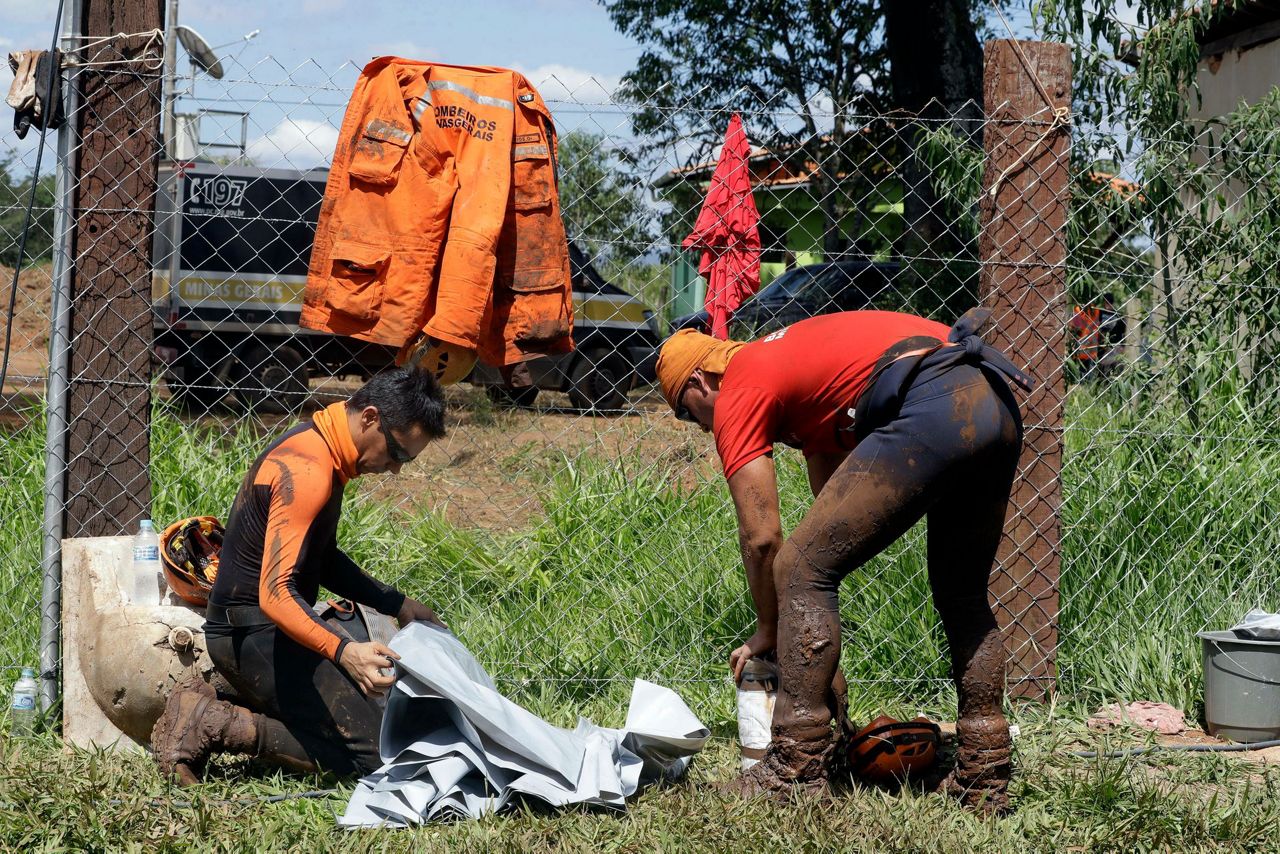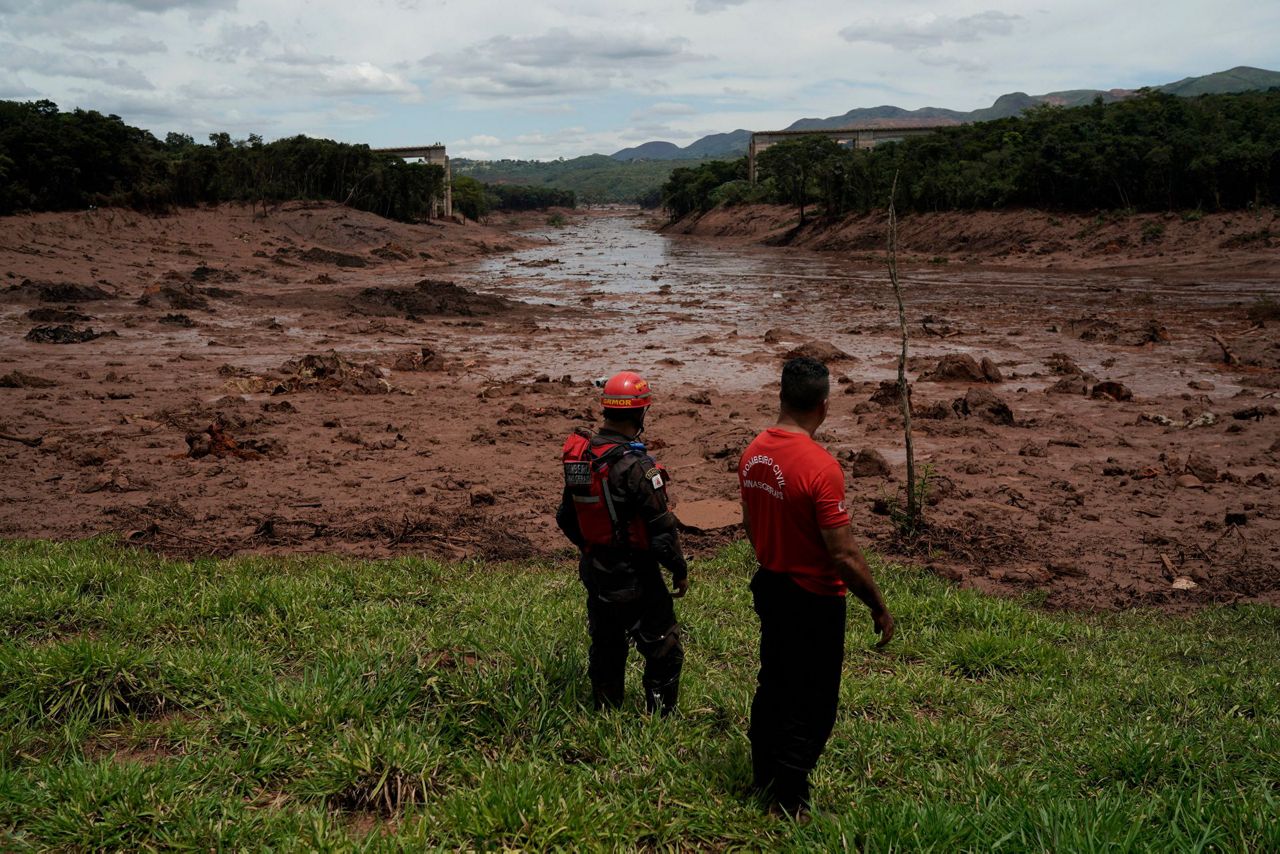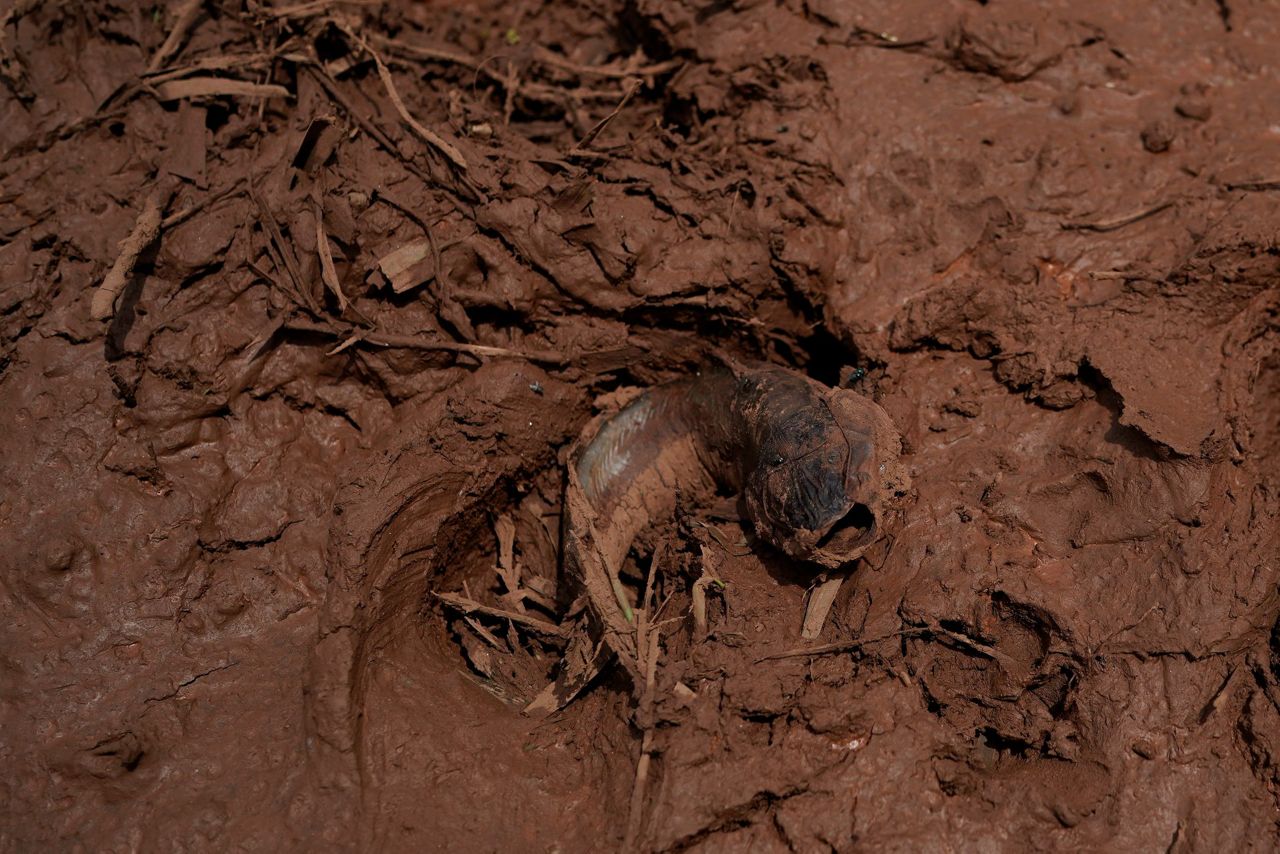BRUMADINHO, Brazil (AP) — Brazilian firefighters and Israeli rescue workers carefully moved Monday over treacherous mud — sometimes walking, sometimes crawling — during their search for survivors or bodies following a dam collapse that buried buildings for an iron ore mining complex and inundated nearby neighborhoods with ore waste.
The confirmed death toll rose to 60, with 292 people still missing, according to the fire department in the southeastern state of Minas Gerais, where the dam is located.
The death toll was expected to grow "exponentially" on Monday after no one was found alive Sunday, the department said. That stood in contrast to the first two days of the disaster, when helicopters whisked people out of the mud.
Search efforts were extremely slow because of the treacherous sea of reddish-brown mud that surged out when the mine tailings dam breached Friday afternoon. The mud was up 24 feet (8 meters) deep in some places, forcing searchers to carefully walk around the edges of the muck or slowly crawl onto it so they would not sink and drown.
Rescue teams Monday morning focused their searches on areas where a bus was immersed and the cafeteria of mining company Vale, where many workers were eating lunch when the dam ruptured. Vale SA is the world's largest producer of iron ore, the raw ingredient for making steel. The Brazilian company's American depository shares plunged 18 percent Monday on the New York Stock exchange.
At the scene of the disaster, helicopters looking for bodies took off and landed nonstop. On the ground, dozens of rescuers with tracking dogs were searching for bodies through the mountains of mud. The Associated Press witnessed a helicopter rescue of three bodies that arrived at the search center. More than 100 Israelis equipped with specialized rescue technology joined the 200 Brazilian firefighters in the search.
Rescue efforts were suspended for about 10 hours Sunday because of fears that a second mine dam in Brumadinho was at risk of failing. About 24,000 people were told to get to higher ground, but by afternoon civil engineers said the second dam no longer posed a risk.
Areas of water-soaked mud appeared to be drying out, which could help firefighters get to areas previously unreachable. Still, it was slow going for the search teams, residents were on edge and some started searching on their own for relatives.
A Catholic priest for a church now being used as a command center for rescuers said many of his parishioners are believed to be buried in mud.
"It's going to be difficult to rebuild our hearts," said the priest, Rene Lopez. "This won't take a month or a year. It's an open wound for all of the people in Brumadinho."
And there was mounting anger directed at Vale amid questions about the area's largest employer following an apparent lack of a warning siren ahead of Friday's collapse.
"The company didn't take care of the people," said Josefa de Santos, who has friends and neighbors among the missing. "I heard the cries of people asking for help, everyone was running and screaming. The siren didn't go off at all, it was horrible."
In an email, Vale told The Associated Press that the area has eight sirens, but "the speed in which the event happened made sounding an alarm impossible" when the dam burst.
Sen. Renan Calheiros called for Vale's board of directors to step down and Attorney General Raquel Dodge told reporters that Vale executives could be held responsible.
Over the weekend, courts froze about $3 billion from Vale assets for state emergency services and told the company to report on how it would help victims.
The carpet of mining waste also raised fears of widespread environmental contamination and degradation.
According to Vale's website, the waste is composed mostly of sand and is non-toxic. But a U.N. report found that the waste from a similar Brazil disaster in 2015 "contained high levels of toxic heavy metals."
That dam owned by Vale and Australian mining company BHP Billiton collapsed in the city of Mariana in Minas Gerais, killing 19 people and forcing hundreds from their homes.
About 250,000 people were left without drinking water thousands of fish died. An estimated 60 million cubic meters (646 million square feet) of waste flooded nearby rivers and eventually flowed into the Atlantic Ocean.
___
Kaiser reported from Sao Paulo and Prengaman reported from Arraial do Cabo, Brazil. Associated Press photographer Leo Correo in Brumadinho contributed to this report.
Copyright 2019 The Associated Press. All rights reserved. This material may not be published, broadcast, rewritten or redistributed.















